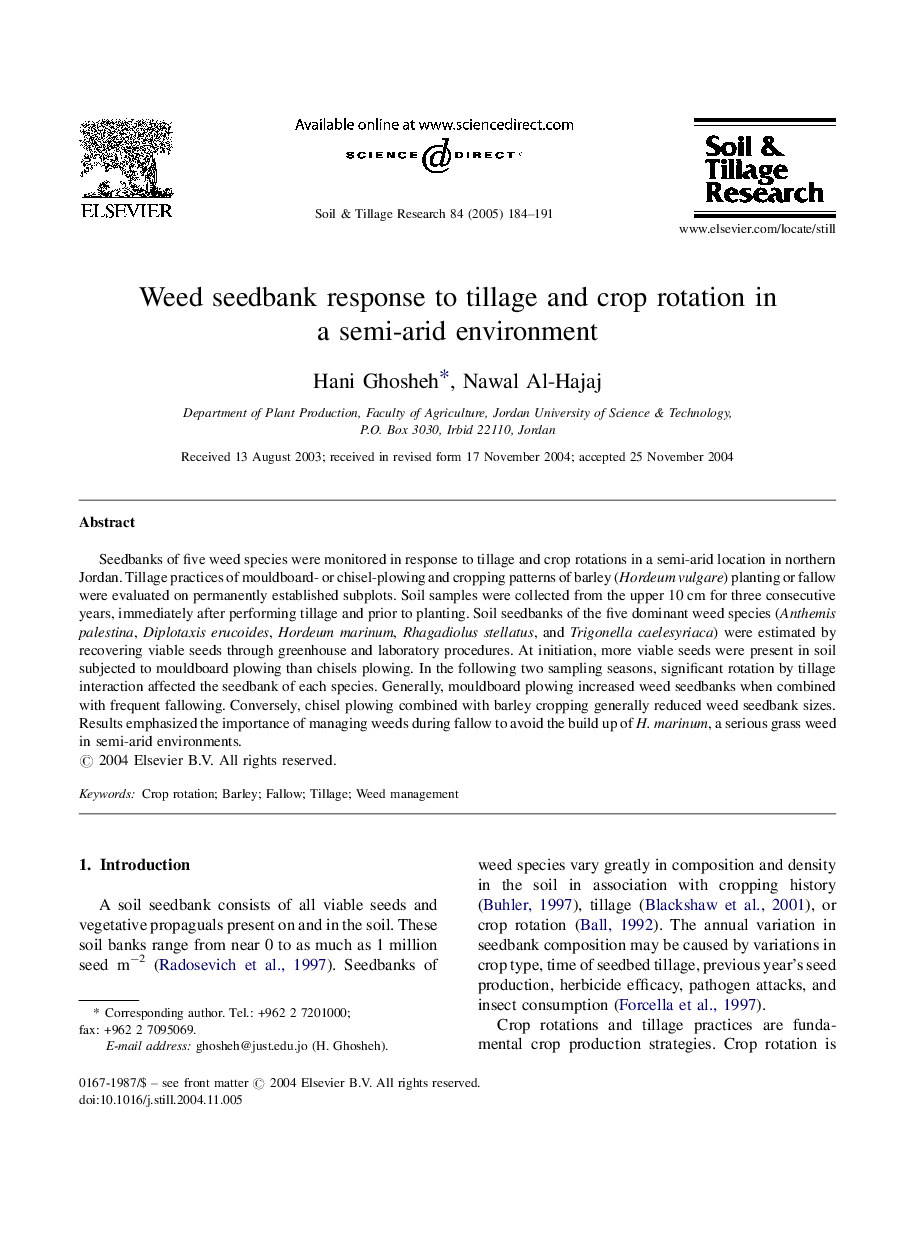| Article ID | Journal | Published Year | Pages | File Type |
|---|---|---|---|---|
| 10295288 | Soil and Tillage Research | 2005 | 8 Pages |
Abstract
Seedbanks of five weed species were monitored in response to tillage and crop rotations in a semi-arid location in northern Jordan. Tillage practices of mouldboard- or chisel-plowing and cropping patterns of barley (Hordeum vulgare) planting or fallow were evaluated on permanently established subplots. Soil samples were collected from the upper 10Â cm for three consecutive years, immediately after performing tillage and prior to planting. Soil seedbanks of the five dominant weed species (Anthemis palestina, Diplotaxis erucoides, Hordeum marinum, Rhagadiolus stellatus, and Trigonella caelesyriaca) were estimated by recovering viable seeds through greenhouse and laboratory procedures. At initiation, more viable seeds were present in soil subjected to mouldboard plowing than chisels plowing. In the following two sampling seasons, significant rotation by tillage interaction affected the seedbank of each species. Generally, mouldboard plowing increased weed seedbanks when combined with frequent fallowing. Conversely, chisel plowing combined with barley cropping generally reduced weed seedbank sizes. Results emphasized the importance of managing weeds during fallow to avoid the build up of H. marinum, a serious grass weed in semi-arid environments.
Related Topics
Physical Sciences and Engineering
Energy
Renewable Energy, Sustainability and the Environment
Authors
Hani Ghosheh, Nawal Al-Hajaj,
